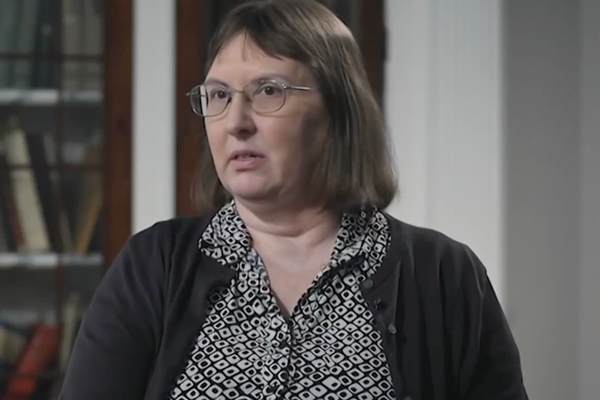
The play has barely begun but onstage at Belvoir’s new production of The Curious Incident of the Dog in the Night-Time a countdown clock is already, steadily, ticking down to something explosive.
Christopher, an autistic teenager, is about to be thrown into the deep end of a murder mystery (involving his neighbour’s dog). Emotions are running high and a confrontation is brewing.
Rather than increase the tension, however, the clock cuts through it: we have five seconds to steel for something loud. When it comes we’re prepared, and able to take care of ourselves.
Mark Haddon’s bestselling 2003 novel has been adapted for the stage a number of times but this warning system is unique to the show now in Sydney – and it’s thoroughly explained by the performers before the show begins. There are also “timetables” provided in the foyer that allow audiences to safely navigate the plot twists and big sensory moments embedded in the work, and a quiet space in the theatre’s green room for audience members who may need it.
It’s all part of what the director, Hannah Goodwin, describes as a “neurodivergent-affirming dramaturgy” designed to make the play more accessible. “[I wanted to] make a show that Christopher himself would enjoy and be able to access,” she says.
That hasn’t always been the priority: the critically acclaimed 2012 production by London’s National Theatre, which previously toured Australia, relied on dramatic lighting, video projection and sound cues to demonstrate Christopher’s experience of sensory overload, making it challenging for neurodivergent audiences – and potentially prohibitive for autistic performers.
The autistic actor Daniel R Nixon, who plays Christopher in Belvoir’s production (and who previously played an autistic teen in Queensland Theatre’s acclaimed production Drizzle Boy), describes viewing clips of the National Theatre production online as “almost triggering from a sensory point of view”.
Goodwin worked closely with Nixon and neurodivergent members of her creative team to design a show that was as accessible for those on stage as those off it. She also drew on the expertise of Western Australia’s award-winning theatre company Sensorium, which makes shows for young audiences with disability, and the Drizzle Boy director, Daniel Evans.
Nixon says he is particularly proud of the production’s countdown system, which he feels mirrors the warning system in Christopher’s brain. He hopes it will help audiences understand “what it actually feels like when somebody is [approaching] sensory overload, or potentially experiencing a panic attack or something like that, where it really does feel like a ticking timebomb is going off”.
Haddon’s book had a profound emotional effect on Nixon. “I had never really read a story before that I’d connected so deeply with,” he says.
At the time it was published, and even a decade later when the UK playwright Simon Stephens’ stage adaptation premiered at National Theatre, mainstream representations of autistic protagonists were rare.
Since then, however, the book and play have been criticised for problematising autism, promoting simplistic stereotypes and being uncritical in their depiction of other characters’ abusive treatment of Christopher. (Haddon himself has stated that he knew very little about autism and did “no research” before writing his novel.)
“I know that the book and the play has been a little divisive within the community; I don’t think that it speaks to everyone,” Nixon says. “I was able to look past some of those potential moments and just celebrate that I could see a character like myself.”
Goodwin, meanwhile, has grappled with the “fraught” source material by restoring the play to its original setting in the late 90s, to better contextualise its depiction of autism, and to acknowledge that Christopher’s experience in the world would be different now, with more evolved support systems, understandings and technology in place.
“We definitely, as a team of artists, have had a gently antagonistic relationship with some of the content,” she says. “And I hope that this has opened up the play, and the conversation around the aspects of the autistic experience that this play does try to represent accurately, a little bit more than what a production built even five years ago would have been able to do.”
The Curious Incident of the Dog in the Night-Time is at Belvoir St Theatre, Sydney, until 22 September







